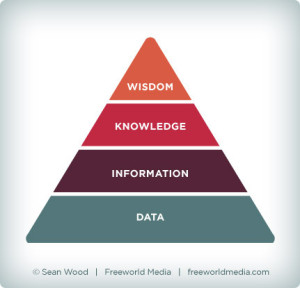Over the years, I’ve learned a lot about why certain organizations succeed with Optimization, and why others succeed “less.” To use the exercise regimen metaphor, many people start exercise programs with goals of losing weight or a better physique, but not everyone sticks with it and achieves their goals.
I thought I’d share some insights so that if you’re thinking about an optimization program, you can avoid the pitfalls and reap the rewards.
There are many nuances of course, but I’d boil it all down to 4 basic steps.
Step 1 – Get Help
Those who get a personal trainer are more likely to accomplish their fitness goals. In the world of online marketing, those who get expert help are far more likely to achieve their business goals than those who try to “DIY.” The help you need is cross-disciplinary: you need expert eyes looking at aesthetics, usability, copywriting, marketing strategy, A/B split testing, personas, pay per click, search engine optimization, and more.
Step 2 – Get Out of Project Mentality
There is a tendency to think about improving a website, or any marketing, as a one-time project with a beginning and end. I believe this is the wrong approach to optimization. You may think you can join a gym for 3 months, lose some weight, then cancel your gym membership and still maintain your improvements. But only a true lifestyle change can help you accomplish fitness goals. Same goes for Optimization, also known as Continuous Improvement. The shift out of project mentality needs to be addressed within your organization (culture), with your vendors, and especially with those who are going to “own” the implementation of your continuous improvements.
Step 3 – Budget For It
Closely related to Step 2, Step 3 is to budget for a process of ongoing optimization. Since it’s not a project that ever should “end,” it should always be in the budget, right? If you join a gym and see improvements (you drop a few pounds, keep them off, and feel better in general), why wouldn’t you budget that gym membership for at least the next couple years? Also keep in mind that “budget” doesn’t just mean a line item in a spreadsheet. Budgeting your internal resources’ time is important, too.
Step 4 – Celebrate the Wins, Learn From the Losses
I’ve already written about celebrating the wins, even if they’re small. Part of the celebration process is stepping back from the day-to-day process of Optimization and acknowledging that the process as a whole is effective. And publicizing wins is probably the most effective way to make sure Optimization costs stay in the budget no matter what! As far as losses go, I define a “loss” as a tested optimization change that decreased a KPI. One of the great things about digital changes is that if they don’t work, un-doing them is pretty quick and painless. But, too many clients back away from testing, changing, and optimizing because of a loss or two. Again using the weight loss analogy, weight fluctuates, and just because you gain back a pound that you lost, doesn’t mean you quit exercising. The key is to learn from the failed change, and inform your next round of optimization. That way, it just feeds back into your cycle of continuous improvement.
Hope this is helpful, and would like to hear your thoughts in the comments on if you think there are other Steps to Optimization that deserve a future post.
[Originally published May 27th, 2009 on GrokDotCom.com, an award-winning, but now defunct, Marketing Optimization blog.]
 As a practitioner of Web Analytics and Optimization, I’ve spent a fair amount of the last seven years of my career focused on tracking and improving Conversion Rates.This is a noble pursuit for any business, but intense focus on the conversion rate metric can have negative implications – people in your organization (or your clients) may obsess about changes in conversion rate, pester you about them, and even blame you for them!
As a practitioner of Web Analytics and Optimization, I’ve spent a fair amount of the last seven years of my career focused on tracking and improving Conversion Rates.This is a noble pursuit for any business, but intense focus on the conversion rate metric can have negative implications – people in your organization (or your clients) may obsess about changes in conversion rate, pester you about them, and even blame you for them!
 Hi Readers! I’ve not been posting lately, which is sad. I’ll try to get back on the
Hi Readers! I’ve not been posting lately, which is sad. I’ll try to get back on the  While case studies about conversion rate lift and increases in revenue from testing get a majority of the “press” these days, there is something far less sexy and far more important to be thinking about: The order in which you execute your test ideas.
While case studies about conversion rate lift and increases in revenue from testing get a majority of the “press” these days, there is something far less sexy and far more important to be thinking about: The order in which you execute your test ideas.